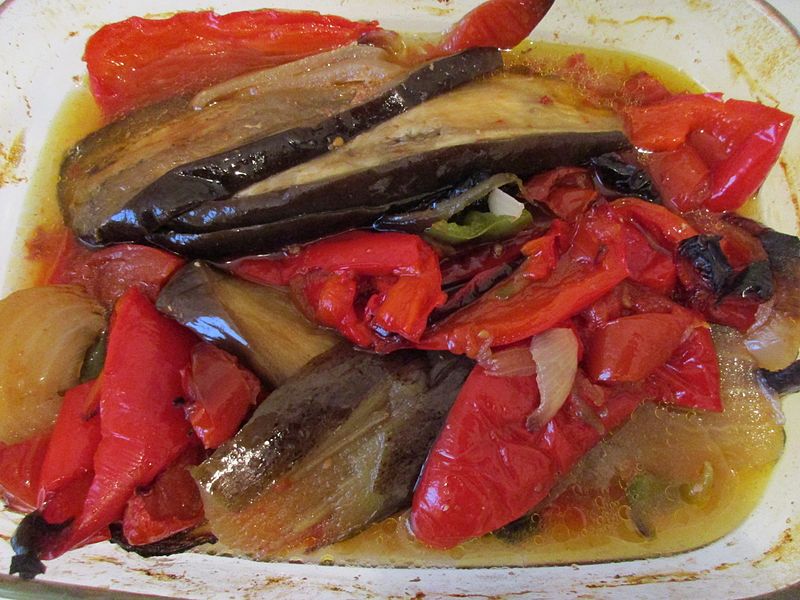Downloads:

General information
How to grill
Keywords
Grill, BBQ, healthy food, traditional food, meat, vegetables, fish, fat free
Level
General information
Cooking on the grill is a very fast, natural, dry-heat roasting technique, because it does not to need fat to cook, although some experts advise to oil the grill to prevent food from being stuck to it. Besides, meat, fish, seafood or vegetables can be cooked.
From a traditional point of view, charcoal or firewood will be used as the heat source. There are two ways to grill food, placing it over the grill rack or skewering food and placing it close to the fire (embers), as it is done for example with the famous, traditional, and delicious espetos de sardinas (sardine skewers) from Malaga (check further references for more information). Cooking on the grill provides food with a delicious and smoky smell and taste, very different to any other cooking technique, thanks to the use of charcoal or firewood.
How to grill
To grill in a traditional way, a rack to place the food, charcoal or firewood and long tongs are needed. It is very important that the rack is clean before cooking food.
With this cooking technique, food must be cut in thick pieces to keep them juicy and not dry inside, since they will be exposed to a temperature of between 160° and 200° C. To cook on the grill, only homogenous charcoal layer is needed (small branches if we use wood), then they should be lighted carefully, and wait for the flames to go out, then the food should be placed on the rack, over the embers (they are ready when they get a whitish colour). It is not recommended to light the fire with a flammable liquid because it will give flavour and smell to the food and it can be dangerous; it is better to use quick ignition cubes, cut in small pieces and thrown throughout the whole charcoal base. With the tongs, a piece can be taken to be lit up, which in turn will light up the rest. When the embers are ready, food must be put on the grill, not to close to the heat. Embers must be lighted for at least 20-25 minutes, and having to turn the food to cook it on both sides. Unlike the techniques seen in units 1 and 2, when cooking on the grill food must never be pierced to check its cooking. If done, juices will come out of the meat for example, and it will be dry and tough.
A tip: when cooking meat, it is better to add the salt after cooking it, and the best one to use is Kosher or Maldon salt, which comes in thick bits or flakes, to avoid excessive salting and so eat an absolutely delicious meat
Description
In this unit will address how to cook on the grill, a very old technique which arose after men discovered the ability to make a fire and, nowadays, it is also known as barbecue or simply, BBQ. Over time, grills have evolved and today, food can be cooked in a traditional way, or by using one the modern electric grills available in the market.
Labels
Benefits
Being a dry-heat culinary technique, food cooked on the grill does not lose its nutrients, so it will lead to very healthy and nutritious dishes.
With this technique there is no need to add seasonings or sauces, so that the true flavour of food is enhanced.
No fats are used for cooking (food is cooked in its natural grease), we can enjoy lighter and healthier dishes.
Food is crunchy in the outside but juicy in the inside, in addition to the fact that food absorbs the fire aroma, which will lead to scrumptious dishes.
All kinds of food can be cooked on the grill, so menus will be very varied and will not get people bored of eating always the same.
And finally, cooking on the grill has an intrinsic social aspect. Enjoy the opportunity of doing a barbeque with family and friends, at home or in the countryside, and have a good time, while eating healthily.
Representative Products
Beef, pork, chicken, vegetables (barbeque of aubergine, courgette, carrot, onion, asparagus, etc.), fish (sardine skewer, skewered octopus, salmon, etc.) seafood (shrimps, prawns, oysters, scallop, etc.)
Risks
If outdoors, extra care must be taken when lighting the fire, paying attention to the wind and keeping away from trees and easily flammable materials
When cooking the food, it is also important to avoid the overconsumption of acrylamides, which is what gives grilled food its characteristic tan or black colour.
Further references
https://www.cookinglight.com/cooking-101/techniques/how-to-grill-anything
https://www.cookinglight.com/cooking-101/techniques/cooking-class-grilling
https://cooking.nytimes.com/guides/7-how-to-grill
https://www.youtube.com/watch?v=Xk1AE1IcWCA
https://www.foodandwine.com/cooking-techniques/grilling/quick-grilling
https://startcooking.com/a-beginners-guide-to-the-barbecue
https://www.delish.com/entertaining/g2167/healthy-grilling-recipes/
https://www.cookinglight.com/food/quick-healthy/quick-easy-grill-recipes?slide=301497#301497
https://www.tasteofhome.com/collection/how-to-grill/
https://www.thespruceeats.com/how-to-grill-331526
https://www.delish.com/entertaining/g1634/unusual-grilling-recipes/
 Play Audio
Play Audio

